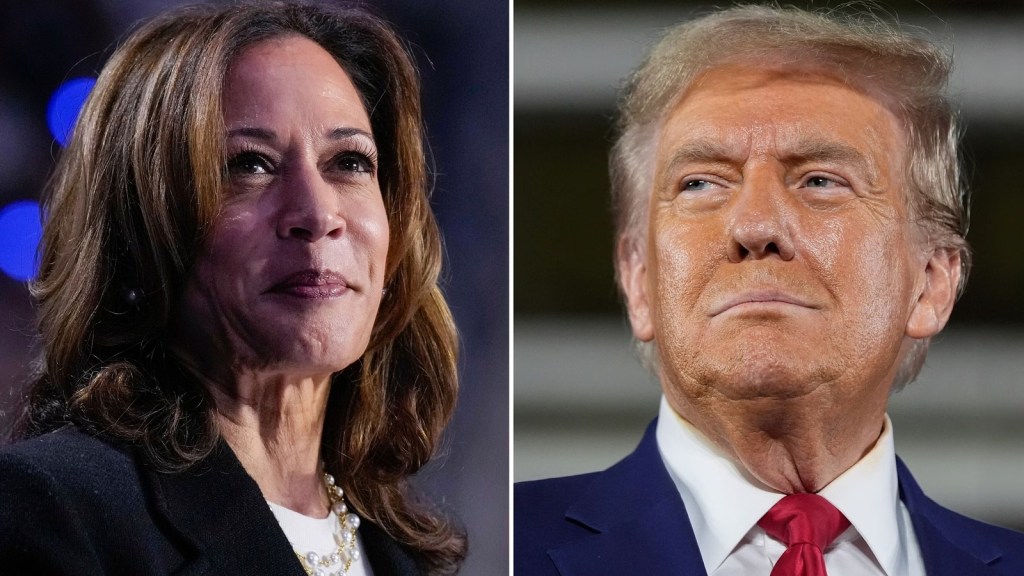US Presidential Election 2024: The Electoral College system in the United States is a distinctive and often controversial system that determines the presidency, independent of the national popular vote. It is a unique American system of electing presidents.
This system has played a decisive role in past elections, notably in 2016 when Donald Trump and in 2000 when George W. Bush became president despite losing the popular vote. In the presidential election 2024, most Americans have cast a vote for either Democrat Kamala Harris or Republican Donald Trump. According to the current trends, Trump is leading with 230 electoral votes and Harris is trailing with 210 votes.
Americans across the nation have cast their votes on the final day of voting in the 2024 US presidential election. But it’s possible the candidate with the most votes won’t be the winner. This is because the US President is not chosen directly by the voters, but by something called the electoral college.
Also Read: US Election Results 2024 Live Updates
What is the Electoral College?
Votes by Americans don’t directly determine who wins the presidential race. Because, instead of a national race, it’s a state-by-state race.
The Electoral College consists of 538 electors. Each state’s number of electors equals its representation in Congress: the sum of its House members plus two senators. The District of Columbia, although not a state, is also granted three electors.
A candidate needs to gain a majority of the votes – 270 or more – to win the presidency. Their running mate becomes the vice president.
This system was originally established to distribute electoral power among the states and prevent Congress from directly choosing the president.
How does the Electoral College work?
Each state has a number of electoral votes, roughly in line with the size of its population. California has the most with 54, while a handful of sparsely-populated states like Wyoming, Alaska and North Dakota (and Washington DC) have the minimum of three.
Electors typically vote for the candidate who wins the popular vote in their respective states, following a winner-takes-all method. However, two states, Nebraska and Maine, use a proportional system, awarding electors based on both statewide results and outcomes in individual congressional districts.
A significant consequence of this structure is that the Electoral College can produce outcomes that differ from the popular vote, as more electoral weight is granted to votes in smaller states compared to larger ones. This can result in a situation where a candidate wins the presidency without winning the most votes nationwide.
This discrepancy has led to criticism, particularly from Democrats, who argue that the system disproportionately benefits Republicans. They contend that a simple majority vote nationwide would better reflect democratic principles.
However, changing the Electoral College would require a constitutional amendment, a challenging and politically charged process that needs substantial support from both Congress and the states.
The Electoral College also heavily influences how presidential candidates campaign. Rather than evenly distributing their efforts across all states, candidates focus on the battleground or swing states—those that have historically been competitive or where neither party has a guaranteed win.
States such as Pennsylvania, Georgia, Arizona and North Carolina, become prime targets, while candidates may spend less time in states that are solidly Democratic or Republican. This strategic focus shapes campaign tactics, voter outreach, and the allocation of resources.
States with the most significant number of electoral votes, like California (54 votes), Texas (40 votes), and Florida (30 votes), are critical to a candidate’s strategy. Pennsylvania, with 19 votes, stands out as a major battleground, alongside other states like Georgia and North Carolina, each with 16 electoral votes.
The process of counting votes involves electors meeting in their states to certify the results after the general election is announced by state officials. This year, the electors are set to meet on December 17 to cast their votes. If a tie occurs, the decision is made by the House of Representatives, where each state’s delegation gets one vote. This has only happened twice, in 1801 and 1825.
Congress plays a ceremonial but crucial role in formally counting and certifying the electoral votes, which will take place on January 6. The vice president presides over this session, and while objections to state results can be raised, they are typically rejected.
The aftermath of the 2020 election led to updates to the Electoral Count Act, clarifying that the vice president cannot change or reject results. Following certification, the president-elect will be inaugurated on January 20 at the Capitol.
The Electoral College system is only used to select the president – all other US elections are decided by a simple popular vote.
Can one win the most votes across US but lose the election?
Yes. It’s possible for a candidate to become president by winning a number of tight races, despite having fewer votes across the country as a whole.
In 2016, Donald Trump beat Hillary Clinton after polling almost three million fewer votes. In 2000, George W Bush defeated Al Gore even though the Democratic candidate won the popular vote by more than half a million, BBC reported.
Only three other presidents have been elected without winning the popular vote, all of them in the 19th Century.
(With inputs from AP)


